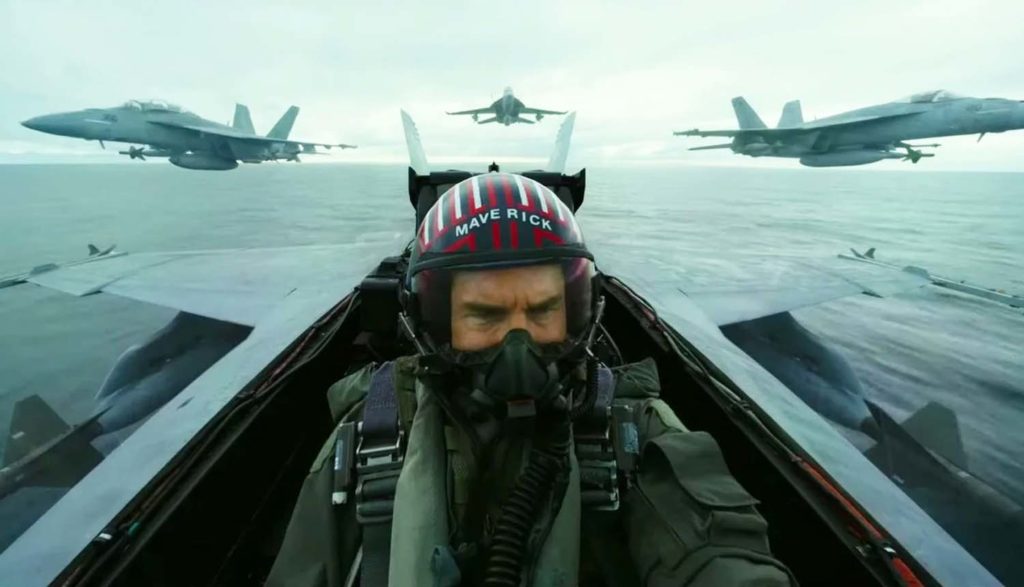Top Gun: Maverick, a sequel 36 years in the making, flies into theaters this weekend. Our own Bob Hoose had some nice things to say about it, as did many other reviewers. But all that positivity doesn’t necessarily obscure one big question: Who really was clamoring for a Top Gun sequel?
The answer, potentially: the U.S. military.
The original Top Gun, what with its glamorous pilots and thrilling aerial scenes and Tom Cruise at peak Cruise-ness, proved to be a huge boon for the country’s armed forces, particularly the U.S. Navy. In fact, the Navy itself says that recruitment rates skyrocketed after the film’s release—rising a ridiculous 500%. The movie was, according to Flying magazine, a “one-hour, 40-minute recruitment ad.”
Now, the Air Force and Navy are hoping for another surge with Maverick. The military is dealing with the toughest recruitment market in two decades, and it needs to fill about 1,600 empty cockpits according to Flying.
“Our … recruiting goals are to bring more than 40,000 enlisted and more than 3,800 officers into our active and reserve components [in 2022],” U.S. Navy Commander Dave Benham told the magazine. “Our recruiters nationwide are working tirelessly to meet those goals and to meet the manpower needs of our fleets. We think Top Gun: Maverick will certainly raise awareness and should positively contribute to individual decisions to serve in the Navy.”
The military is banking on Hollywood to bring in more than a few good men and women. Why? Because Hollywood’s done it before.
We’ve seen the power of Hollywood’s influence many times before. When The Hunger Games came out in 2012, kids—especially girls—flocked to the archery range. In 2013, after the release of Frozen, tourism to Norway ballooned by 20%. (All those tourists reportedly left the Nordic country a bit worse for wear.) If a movie becomes a hit, chances are something the movie deals with will hit, too—sometimes hurting the thing in the process. Clownfish purchases rose by 40% around the globe after the success of Finding Nemo, which led to fewer clownfish in the wild and a lot of dead clownfish in captivity. (They’re apparently really hard to take care of.)
Movies influence us in more subtle but incredibly important ways, too, shaping how we see the world, each other and even ourselves. That influence isn’t necessarily bad. Sometimes, it can be quite good. But make no mistake, it’s there.
Listen, it’s no crime to go to Top Gun, watch the jets scream around the sky and say to yourself, “Man, I want to do that.” But sometimes, movies make a lot of other, less savory things look attractive, too. And that’s why, before strapping yourself into a fun movie, engage your brain as well.







Recent Comments